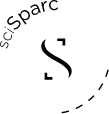Request Demo
Last update 08 May 2025
CB2 x PPARα
Last update 08 May 2025
Related
2
Drugs associated with CB2 x PPARαTarget |
Mechanism CB agonists [+3] |
Active Org. |
Originator Org. |
Active Indication |
Inactive Indication |
Drug Highest PhasePhase 1 |
First Approval Ctry. / Loc.- |
First Approval Date20 Jan 1800 |
Target |
Mechanism CB2 agonists [+1] |
Active Org.- |
Originator Org. |
Active Indication- |
Inactive Indication |
Drug Highest PhasePending |
First Approval Ctry. / Loc.- |
First Approval Date20 Jan 1800 |
3
Clinical Trials associated with CB2 x PPARαNCT05182697
A Randomized, Double-Blind, Sparing-effect Placebo Controlled, With Cross-over Study to Evaluate the Safety, Tolerability and Efficacy of SCI-210 in Children With Autism Spectrum Disorder (ASD)
To evaluate the safety and efficacy of SCI-210 in the treatment of Autism Spectrum Disorders (ASD)
Start Date01 Sep 2023 |
Sponsor / Collaborator |
NCT05766969
A Randomized, Double-Blind, Placebo-Controlled Trial Using Cannabidiol and Palmitoylethanolamide for the Treatment of Painful Diabetic Peripheral Neuropathy of the Feet
The purpose of the study is to evaluate whether the DIA/NPR-6 is a better pain reliever in patients with diabetic neuropathic pain of the feet compared to placebo.
Start Date05 Jun 2023 |
Sponsor / Collaborator |
NCT02645461
Acetylcholine Receptors From Human Muscles as Pharmacological Target for ALS
Amyotrophic lateral sclerosis (ALS) is a fatal disease leading to motor neuron degeneration and progressive paralysis. Other studies have revealed defects in skeletal muscle even in absence of motor neuron anomalies, focusing on acetylcholine receptors (AChRs) and supporting the so-called "dying-back" hypothesis. Outcome of this study will be to understand if the endocannabinoid palmitoylethanolamide (PEA) can reduce the rundown of AChRs currents in ALS muscle, and if it can modify ALS patients' clinical and electrophysiological parameters.
Start Date01 Jan 2014 |
Sponsor / Collaborator |
100 Clinical Results associated with CB2 x PPARα
Login to view more data
100 Translational Medicine associated with CB2 x PPARα
Login to view more data
0 Patents (Medical) associated with CB2 x PPARα
Login to view more data
48
Literatures (Medical) associated with CB2 x PPARα01 Jan 2025·Progress in Neuro-Psychopharmacology and Biological Psychiatry
Role of peroxisome proliferator-activated receptors α and γ in mediating the beneficial effects of β-caryophyllene in a rat model of fragile X syndrome
Article
Author: Polticelli, Fabio ; Ascone, Fabrizio ; Pasquadibisceglie, Andrea ; Carbone, Emilia ; Manduca, Antonia ; Buzzelli, Valeria ; Rava, Alessandro ; Schiavi, Sara ; Trezza, Viviana ; Feo, Alessandro ; Di Trapano, Melania
01 Oct 2024·Metabolism
Cannabinoid receptor 2 plays a key role in renal fibrosis through inhibiting lipid metabolism in renal tubular cells
Article
Author: Li, Xiaolong ; Liang, Ye ; Wang, Xiaoxu ; Li, Zhiru ; Shen, Weiwei ; Kong, Yaozhong ; Hou, Fan Fan ; Zhang, Mengyao ; Li, Jiemei ; Wu, Qinyu ; Zhou, Shan ; Liu, Youhua ; Zhou, Lili ; Feng, Qijian ; Xie, Chao ; Chen, Qiyan ; Ling, Xian ; Miao, Jinhua
23 Mar 2023·International journal of molecular sciences
Beta-Caryophyllene Modifies Intracellular Lipid Composition in a Cell Model of Hepatic Steatosis by Acting through CB2 and PPAR Receptors.
Article
Author: Bonzano, Sara ; Scandiffio, Rosaria ; Cottone, Erika ; Shrestha, Sujata ; Maffei, Massimo E ; Bovolin, Patrizia ; De Marchis, Silvia ; Bossi, Simone
1
News (Medical) associated with CB2 x PPARα08 Aug 2022
The trial's objectives are to evaluate the safety, tolerability and efficacy of SciSparc's SCI-210 in children and adolescents with ASD
TEL AVIV, Israel, Aug. 08, 2022 (GLOBE NEWSWIRE) -- SciSparc Ltd. (Nasdaq: SPRC) ("Company" or "SciSparc"), a specialty clinical-stage pharmaceutical company focusing on the development of therapies to treat disorders of the central nervous system, today announced that it has received approval from the Israeli Ministry of Health to conduct the Company’s clinical trial for SCI-210 in patients suffering from autism spectrum disorder ("ASD").
Recently, the Company announced it received approval from the Ethics Committee of The Soroka University Medical Center, in Be'er-Sheva, Israel, to conduct the Company’s clinical trial.
“We are pleased to achieve another important milestone that brings us one step closer toward initiation of our clinical trial in ASD,” commented Oz Adler, SciSparc's Chief Executive Officer. "ASD symptoms in pediatric patients may cause a sever decrease in life quality, for parents and children. We believe that our unique and proprietary SCI-210 has the potential to be a new treatment to reduce irritability and other conditions associated with ASD. Patients today have limited treatment options while the need for such treatment rapidly grows. Our drug candidates potentially enable us to provide effective, safer and more tolerable treatment with fewer side effects thanks to the lower doses of cannabinoids, boosted by the combination with CannAmide™, a mission always desirable but even more so when children are the target population."
The trial will investigate the effect of the Company’s drug candidate SCI-210, a proprietary combination of cannabidiol (“CBD”) and CannAmide™, versus CBD monotherapy in treating ASD.
The trial's objectives are to evaluate the safety, tolerability and efficacy of SCI-210 in children and adolescents with ASD in a designed 20-week, randomized, double-blind, placebo controlled with a cross-over clinical trial of 60 children. The trial has three primary efficacy end points: the Aberrant Behavior Checklist-Community (ABC-C) parent questionnaire; the Clinical Global Impressions-Improvement (CGI-I) performed by a clinician; and the effective therapeutic dose.
ASD is a condition related to brain development that impacts how a person perceives and socializes with others, causing problems in social interaction and communication. The term "spectrum" in autism spectrum disorder refers to the wide range of symptoms and severity.
The launch of the trial is pending further approvals by the Israeli Medical Cannabis Agency.
About SciSparc Ltd. (NASDAQ: SPRC):
SciSparc Ltd. is a specialty clinical-stage pharmaceutical company led by an experienced team of senior executives and scientists. SciSparc’s focus is on creating and enhancing a portfolio of technologies and assets based on cannabinoid pharmaceuticals. With this focus, the Company is currently engaged in the following drug development programs based on THC and/or non-psychoactive cannabidiol (CBD): SCI-110 for the treatment of Tourette Syndrome, for the treatment of Alzheimer's disease and agitation; SCI-160 for the treatment of pain; and SCI-210 for the treatment of autism spectrum disorder and status epilepticus.
Forward-Looking Statements:
This press release contains forward-looking statements within the meaning of the "safe harbor" provisions of the Private Securities Litigation Reform Act of 1995 and other Federal securities laws. For example, SciSparc is using forward-looking statements when it discusses the initiation of the Company’s clinical trial in its drug candidate SCI-210 in patients suffering from ASD, the potential effect and evaluation of the drug candidate SCI-210 and further regulatory approvals in Israel to conduct its ASD research trial with The Soroka University Medical Center. Historic results of scientific research and clinical and preclinical trials do not guarantee that the conclusions of future research or trials will suggest identical or even similar conclusions. Because such statements deal with future events and are based on SciSparc's current expectations, they are subject to various risks and uncertainties and actual results, performance or achievements of SciSparc could differ materially from those described in or implied by the statements in this press release. The forward- looking statements contained or implied in this press release are subject to other risks and uncertainties, including those discussed under the heading "Risk Factors" in SciSparc's Annual Report on Form 20-F filed with the U.S. Securities and Exchange Commission (the “SEC”) on April 28, 2022, and in subsequent filings with the SEC. Except as otherwise required by law, SciSparc disclaims any intention or obligation to update or revise any forward-looking statements, which speak only as of the date they were made, whether as a result of new information, future events or circumstances or otherwise.
Investor Contact:
IR@scisparc.com
Tel: +972-3-6167055
Analysis
Perform a panoramic analysis of this field.
login
or

AI Agents Built for Biopharma Breakthroughs
Accelerate discovery. Empower decisions. Transform outcomes.
Get started for free today!
Accelerate Strategic R&D decision making with Synapse, PatSnap’s AI-powered Connected Innovation Intelligence Platform Built for Life Sciences Professionals.
Start your data trial now!
Synapse data is also accessible to external entities via APIs or data packages. Empower better decisions with the latest in pharmaceutical intelligence.
Bio
Bio Sequences Search & Analysis
Sign up for free
Chemical
Chemical Structures Search & Analysis
Sign up for free



